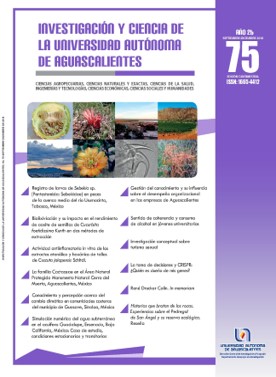The Decision making and CRISPR: Who owns my genes?
DOI:
https://doi.org/10.33064/iycuaa2018751783Keywords:
CRISPR/Cas9, gene editing, decision making, bioethicsAbstract
Decision making derives from the activity of cortical neurons in the brain. A healthy person is able to make its own decisions –on a daily basis- even when these involve changing its body. CRISPR/Cas9 biotechnology gives the opportunity to edit the genome of eukaryote and prokaryote cells, opening the possibility to every individual to modify its own genome based on its own decision. However, this theme is highly controversial yet all the scientific information available that suggest the potential benefits of CRISPR/Cas9 to treat diseases and to develop new alternatives for the bio-industries. This news approaches some features of the topic decision making upon CRISPR/Cas9 technology as intended to edit human cells and explains the basic concepts of this outstanding-edge molecular technique.
Downloads
References
• Broad Institute. (s. f.). CRISPR TIMELINE [Sitio de internet]. Recuperado de https://www.broadinstitute.org/what-broad/areas-focus/project-spotlight/crispr-timeline
• DIY BIO. (s. f.). Local. [Base de datos]. Recuperada de https://diybio.org/local/
• Gaj, T., Gersbach, C. A., & Barbas, C. F. (2013). ZFN, TALEN and CRISPR/Cas-based methods for genome engineering. Trends in biotechnology, 31(7), 397-405. doi.org/10.1016/j.tibtech.2013.04.004
• Kelland, K. (29 de agosto de 2012). Insight-Neuroscience in court:
My brain made me do it. Health news [en línea]. Recuperado el 22 de noviembre de 2017, de https://www.reuters.com/article/us-neuroscience-crime/insight-neuroscience-in-courtmy-brain-made-me-do-it-dUSBRE87S07020120829
• Khammuang, S. (1998). The phonological study of Padaung (Long-Necked Karen) at Ban Naisoi, Tambol Pang Mu, Muang District, Mae Hong Son Province (Tesis de maestría). Muang district, Mae Hong Son province, Thailand: Mahidol University.
Recuperado de http://mulinet11.li.mahidol.ac.th/e-thesis/scan/3636912.pdf
• Lander, E. S. (2016). The Heroes of CRISPR. Cell, 164(1-2), 18-28. doi.org/10.1016/j.cell.2015.12.041
• Pearlman, A. (2017). My body, my genes. New Scientist, 22-23. doi: 10.1016/S0262-4079(17)32257-1
• Romo, R., Lemus, L., & de Lafuente, V. (2012). Sense, memory, and decision-making in the somatosensory cortical network. Current Opinion in Neurobiology, 22(6), 914-919. doi: 10.1016/j.conb.2012.08.002
• Traxler, E. A., Yao, Y., Wang, Y.-D., Woodard, K. J., Kurita, R., Nakamura, Y., … Weiss, M. J. (2016). A genome-editing strategy to treat β-hemoglobinopathies that recapitulates a mutation associated with a benign genetic condition. Nature Medicine, 22(9), 987-990. doi: 10.1038/nm.4170
• Turton, D. (2004). Lip-plates and ‘the people who take photographs’: Uneasy encounters between Mursi and tourists in southern Ethiopia. Anthropology Today, 20(3), 3-8. doi: 10.1111/j.0268-540X.2004.00266.x
• US National Library of Medicine. (s. f.). PubMed [Base de datos]. Recuperada de https://www.ncbi.nlm.nih.gov/pubmed/
• Xie, F., Ye, L., Chang, J. C., Beyer, A. I., Wang, J., Muench, M. O., & Kan, Y. W. (2014). Seamless gene correction of β-thalassemia mutations in patient-specific iPSCs using CRISPR/Cas9 and piggyBac. Genome Research, 24(9), 1526-1533. doi: 10.1101/gr.173427.114
Downloads
Published
How to Cite
License
Las obras publicadas en versión electrónica de la revista están bajo la licencia Creative Commons Atribución-NoComercial-CompartirIgual 4.0 Internacional (CC BY-NC-SA 4.0)









